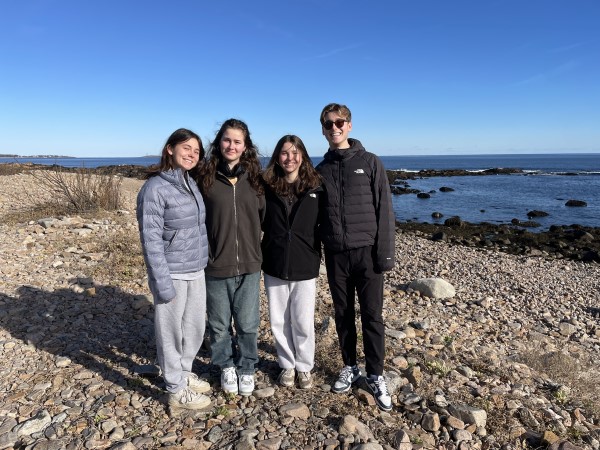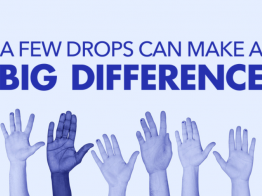
Meet Laura Tremblay: Former screening skeptic turned advocate
The Tremblay family (Laura, 2nd from right; Bella, far left).
Laura Tremblay’s type 1 diabetes (T1D) journey began in 2018, when her 9-year-old daughter, Bella, was admitted to the hospital in diabetic ketoacidosis (DKA). Like many families without a history of T1D, the Tremblays didn’t recognize the symptoms.
“I thought she had a urinary tract infection,” recalls Laura, a former adult primary care doctor. “But, in hindsight, the signs of type 1 diabetes were there. She had been urinating frequently, drinking lots of milk at meals, and losing weight.”
Bella Tremblay was 9 years old when she was admitted to the hospital in diabetic ketoacidosis (DKA) in 2018. Like many families without a history of T1D, the Tremblays didn’t recognize the symptoms.
During Bella’s brief hospital stay, Laura remembers feeling overwhelmed by the flood of information. “Even with my medical background, I struggled with trying to quickly get up to speed with what felt like life and death issues: short-acting insulin, long-acting insulin, carb counting, what to do when she went low, what to do when she went high, how to dose glucagon, going back to school.”
In the following months, Laura set out to learn all she could about T1D advances. While at a Friends for Life conference she heard about TrialNet risk screening. But, at the time, she didn’t feel like she needed to have her three other children screened. “After our experience with Bella, I thought we'd never miss another diagnosis," she recalled. “We also thought knowing another one of our children was at risk would just make everyone more anxious.”
Hoping to help other families facing a new T1D diagnosis, Laura joined Breakthrough T1D (formerly JDRF) in 2021 as a Clinical Trial Education Volunteer for the Pacific Northwest region. As she learned more about risk screening, she came to appreciate the benefits. “I learned that there are things you can do with the screening results to slow disease progression, such as joining a clinical trial or gaining access to treatment,” said Laura. “And the rate of DKA at diagnosis plummets for people for people who know their risk.”
Even with her knowledge about the benefits of screening, Laura concedes she was slow to get her other kids tested. “Getting the family screened was on my to-do list, but with two kids in college away from home, we just didn’t get around to it.”
That all changed in 2023, when her oldest son, Sebastian, went in for a routine physical exam. “We live in Oregon, and Sebastian was in college in Boston, so he was texting me his lab test results,” recalls Laura. “Everything was normal until he sent me his A1C [average blood sugar level over the past three months]. When I saw his A1C was high, my heart dropped. I instantly regretted not getting him screened while he was living at home. If he was diagnosed with T1D now, he would have to try to navigate it on his own. That idea that I was saving us the anxiety of knowing our risk, well, the anxiety came crashing in.”
Sebastian’s high A1C prompted Laura to get all three kids screened. Sebastian got screened at Boston’s Joslin Diabetes Center, one of 17 TrialNet Clinical Centers at the forefront of T1D research. For her other two daughters, one at home and one at college in Missouri, Laura ordered TrialNet test kits that could be taken to a local a lab.
Thankfully, all three results came back negative.

Bella (2nd from right), now 15, with her siblings. All three were screened by TrialNet in 2023.
Looking back, Laura says the entire experience taught her an important lesson that she now shares with the families she counsels following a T1D diagnosis.
“Learning your child is at risk for T1D is stressful, but avoiding screening can lead to even greater anxiety when you have an unexpected diagnosis,” she said. “The same people who do the screening will help you navigate next steps and build a support network.”
Laura says she also makes a point of reminding families that just because one family member has T1D, it doesn’t mean that others are going to test positive for diabetes autoantibodies. “Even with a family history of T1D, about 95-97 percent of people test negative for the antibodies that signal increased risk.”
Bella, now 15, is managing her T1D well, and Laura is hopeful about the future of T1D research. "I told Bella that I truly believe we will find cures—plural—in her lifetime. The key is to stop T1D before it ever gets started. And the only way to do that is through screening.”
TrialNet offers three free, convenient screening options for relatives of people with T1D: an in-home test kit (using a fingerstick), a kit to take to a participating lab for a blood draw, or in-person screening at a TrialNet site or event.
Screening is available to people ages 2-45 who live in the United States or Canada who have a relative with T1D. TrialNet also offers screening and monitoring to people in the general population who have been screened outside TrialNet and test positive one or more T1D-related autoantibodies. Children under 18 who have negative results can be rescreened every two years. For more information about screening, TrialNet locations, and upcoming screening events, visit TrialNet.org






